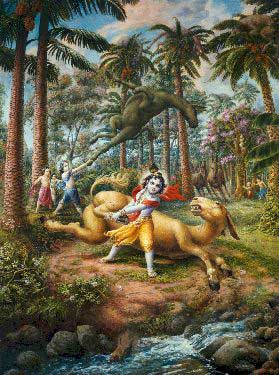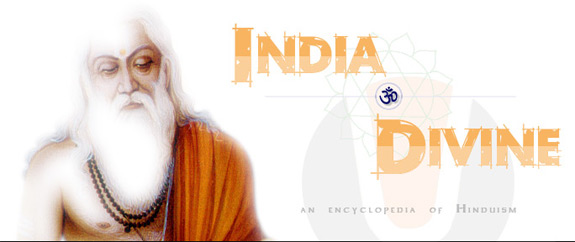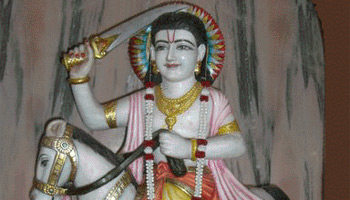Fotos de vijay
Ratha Yatra
Govardhana/Kartik Mornings - India - 2009
| Friday, 13 November 2009 |
| Tridandisvami Sri Srimad Bhaktivedanta Narayana Maharaja
[Dear Harikatha Readers,
The month-long kartika parikrama is over now, and this is our last Kartika report. On the last day of Kartika many pilgrims wept, looking forward to the next year and more association with Srila Narayana Gosvami Maharaja, their spiritual guide. During the first half of Kartika, Srila Maharaja gave discourses at Gopinatha Bhavan in Vrndavana each evening, and called upon others to speak as well. He discussed the life and precepts of the Savior of this Age of quarrel and hypocrisy, Sri Caitanya Mahaprabhu, with reference to Sri Caitanya-caritamrta. He also discussed the Lord’s divine pastime places visited by the devotees during the day. In the mornings he spoke on the abounding philosophy and sweetness of the pastime of Mother Yasoda binding Krsna – Sri Damodara-lila. During the second half of Kartika, Srila Maharaja continued his discourses on Sri Caitanya Mahaprabhu’s life and teachings, culminating in the Lords profound conversations with His eternal associate Sri Ramananda Raya. In the mornings, astonishing all sincere souls present with the depth of his mercy, he discussed the pastimes and philosophy of Srimad-Bhagavatam Eleventh Canto, especially regarding Sri Krsna’s teachings to His most intimate associate Uddhava ji, and also Sri Krsna’s divine disappearance from this world. Rather than have you wait awhile for us to transcribe and edit the translations of these totally enlivening Hindi discourses on the Eleventh Canto, we are sending you practically the same discourses spoken a few years ago (2006), in English, in Badger, California. The first of those discourses was spoken on June 13th. Dear Readers, if you would like to read the rest of the Eleventh Canto discourses Srila Maharaja gave in Badger that June, you will find them on www.purebhakti.com. And, if you would like to hear them directly from the lips of Srila Maharaja, you will find the audio files on www.purebhakti.tv.] “I am happy that you have assembled here to hear hari-katha. Keep all this hari-katha in your heart forever. “This samadhi-grantha, Srimad-Bhagavatam, was manifested by Srila Vyasadeva. [Grantha means scripture. Srimad-Bhagavatam is called samadhi-grantha because Srila Vyasadeva realized everything by his deep meditation (samadhi) on Sri Krsna, after which he wrote the same in book form]
“…In the 10th Canto there are three kinds of pastimes of Sri Krsna – balya-lila (baby pastimes), kaumara-lila (childhood pastimes) and kishora-lila (pastimes in youth). In balya-lila Krsna liberated the demons Putana, Trnavarta, Sakatasura and others. These are very interesting hari-kathas. After that, although Sri Krsna is the Supreme Lord, very powerful, full with six opulences, unlimited and omnipresent, still, Mother Yasoda was able to bind Him by her love and affection and chastised Him. She made that Supreme Lord weep and weep and weep. This is very wonderful. “After that, Sri Krsna and His family moved to Vrndavana, where He liberated the demons Dhenukasura, Vatsasura, Aghasura, Bakasura, Sankacuda, Kesi, Vyomasura and so many other. Why? “yada yada hi dharmasya ["Whenever and wherever there is a decline in religious practice, O descendant of Bharata, and a predominant rise of irreligion – at that time I descend Myself. (Bhagavad-gita 4.7)]
“Krsna came to establish religious principles and to liberate the demons. These demons were the burden of the Earth, and He removed that burden. He went to Mathura, and there He defeated Kamsa, Carana, Mustika and all others like them. He defeated Jarasandha eighteen times, even though Jarasandha had so many aksauhini [A solid phalanx of 21,870 chariots, 21,870 elephants, 109,650 infantry and 65,600 cavalry is called an aksauhini.] soldiers – more soldiers than in the Mahabharata – and a great weight of the Earth was thus removed. Then, through Mucukunda, Krsna killed Kalyavana. Sri Krsna is the Supreme Lord and very powerful, but He could not kill the great demon Jarasandha personally (because Jarasandha had received a boon that he could not be killed by anyone from the Yadu dynasty). Jarasandha was therefore killed by Him through the hands of Bhima. “Then, in the Mahabharata Battle, eighteen aksauhini divisions were destroyed, and so much weight of the Earth was relieved. After that Lord Krsna defeated Rukma, Sisupala and Dantavakra, and Pundarika Vasudeva. Pundarika Vasudeva had made two artificial hands, imitating Vasudeva Krsna. He carried some paraphernalia and told Krsna, "Oh Krsna, do not cheat others. I am Vasudeva Krsna. If you want to challenge my words, then be ready to fight." Krsna began to laugh and said, "Yes, you are really Vasudeva Krsna?" Krsna then defeated him and also his ally, the king of Kasi, who was also a demon. “After that Krsna was thinking, "Still, our Yadu dynasty is there, and that dynasty of the Yadus is very powerful. If I ascend to Goloka Vrndavana, the members of our dynasty may create many problems – so they may also be a burden to the Earth. How shall I remove them?" He then inspired something in the hearts of the yogis and rsis like Durvasa. “I forgot to mention that after rasa-lila Lord Sri Krsna went to Dvaraka and married His eight prominent queens, such as Rukmini and Satyabhama, and He also married 16,000 other princesses. He liberated many kings from the jail of Narakasura. Narakasura wanted to marry those princesses, but Krsna killed him and married them, and they all became His queens in Dvaraka. After that He began thinking about the prayer He had heard from Brahma and Sankara: "You have come to this world for a certain reason, and now everything has been accomplished by You. Now we request that You return to Goloka Vrndavana. We also pray that on the way there You will come to Brahma-loka." Krsna accepted their prayer, and that is why He inspired Durvasa to give that curse. “The event leading up to the curse is as follows: Sri Krsna's son Samba was very beautiful. The young princes of the Yadu dynasty decorated Samba as a beautiful lady, and put cloth and other things under his sari to make him look pregnant. Samba and the other princes then approached Narada, Durvasa and other Rsis, and one of them said, "Oh, she is very shy and cannot personally ask you. She wants to know whether it will be a son or daughter who will come from her womb." “After the boys asked this three times, Durvasa became angry and said, "There will be no son or daughter – it will be a club, and by that club the entire Yadu dynasty will be finished." “Out of fear, the princes did not tell Lord Krsna about this incident; they told Ugrasena. Krsna knew what had transpired, however, and He saw that many inauspicious things were about to take place. He saw such evil omens as blood raining from the sky, winds blowing violently, and elephants and dogs weeping. “He then told the leaders of the Yadu dynasty, ‘We are seeing evil omens. We should go to Prabhasa-tirtha to counteract the sinful reactions.’ “Krsna and His family members went to Prabhasa-tirtha and began to donate so many things to please the brahmanas. He began to perform fire sacrifices, and during the fire sacrifice the young Yadus took a kind of rice-wine and became intoxicated. They all began to fight with one another. When their weapons were broken they took sharp bamboo sticks which were as hard as thunderbolts, and they fought with those and killed each other. “Why did this happen? Krsna wanted to go to Goloka Vrndavana and He wanted His associates to return to their abodes (planets) as well. He therefore created something like a magic show. By His yogamaya potency it appeared that His associates killed each other, but that is not what happened. Those who came from Goloka Vrndavana, from Vaikuntha, and from the heavenly planets all went back to their abodes. The queens and other members of the Yadu dynasty also returned. It was assumed that they had burned with their husbands in the sati-rites, but they did not. “In his commentary, Srila Visvanatha Cakravarti Thakura has written the history of a magician and his family. The magician performed a magic show for the king and his associates. The wife of the magician climbed on a high rope, and she carried many pitchers of water as she danced on the rope. The Queen and King became happy, and they gave a very expensive necklace to that lady. The two young sons of the lady then began to fight over the necklace. The mother left the necklace with them, and they continued to fight over it. “The boys were equal in strength. As they fought together, they each took a sword and cut off each other's heads. The father cried out, "Oh, my sons are dead!" The wife rushed towards them at once, full of sorrow, and she immediately cut off her own head. Her husband was so aggrieved that he also cut off his own head. “The King and Queen became very unhappy. They performed the funeral rites and returned to their palace. In the morning a letter came to them: "Maharaja, you gave us a present for dancing on the rope, but you did not give a present for our second performance. We are not dead. We are waiting for our reward. Oh, if you have no faith, you can come and see that we are alive." “The Queen and King became very happy. They went to the magician's home with their associates and with garlands. They saw that the members of the magician family were all waiting for them, ready to welcome them. “Lord Sri Krsna performed His miracles as well, for He is the magician of magicians. In this way, He took all His associates to the heavenly planets, Vaikuntha and Goloka Vrndavana.” [This next discourse was spoken on June 14th:] “Yesterday I explained that Lord Sri Krsna wanted to remove His family members before His departure from this world. He therefore inspired brahmanas and rsis to curse the young Yadavas so that they would very soon be ‘vanquished.’ When they were all finished, Sri Baladeva Prabhu went into samadhi. He left this world and entered transcendental Goloka Vrndavana. Lord Krsna acted as if nothing had happened; He went to the bank of the River Sarasvati and sat alone at the base of a banyan (pippal) tree, deeply thinking. “In the meantime Uddhava arrived there, weeping, and told Krsna, ‘I know that You are going to Your own abode, Goloka Vrndavana. Please take me with You. I cannot remain here without You, so please take me.’ “Sri Krsna replied, ‘You will have to remain for some time in this world, but I will now tell you the essence of all the Vedic literatures. I will explain to you how a person can very easily attain the Supreme Lord. After this you should go to Badrikasrama where Maitreya Rsi is staying. On the way you will meet Vidura, and you should explain to him these teachings. Then you should teach Maitreya, after which he will reveal all these teachings to the world. Even if you remain here, you will not be separated from Me, and in the future, you will be in Vrndavana at Kusuma-sarovara (Uddhava-Kunda) as a blade of grass.’ “Previously Uddhava had prayed: asam aho carana-renu-jusam aham syam [“The gopis of Vrndavana have given up the association of their husbands, sons, and other family members, who are very difficult to give up, and they have forsaken the path of chastity to take shelter of the lotus feet of Mukunda, Krsna, which one should search for by Vedic knowledge. Oh, let me be fortunate enough to be one of the bushes, creepers or herbs in Vrndavana, because the gopis trample them and bless them with the dust of their lotus feet. (Srimad-Bhagavatam 10.47.61)] “Uddhava prayed, ‘I want to be in Vrndavana as a blade of grass. Then, when the gopis come to meet with Lord Krsna, their lotus foot dust will fall on my head and my life will be successful.’ “Lord Sri Krsna continued, ‘You should remain there. After some time Vajranatha and Pariksit Maharaja will come to you, and at that time you should give them all the teachings I am about to impart.’ In this way, Krsna began to instruct Uddhava. “What I have told until now is a preface. I have discussed under what circumstances Sri Krsna gave His many instructions to Uddhava. Now we will discuss the meeting of Nemi Maharaja and the nine Yogendras. “While Sri Krsna's father Vasudeva Maharaja was residing in Dvaraka along with Sri Krsna and the entire Yadu dynasty, Sri Narada Rsi would sometimes visit his palace there. On those visits, Vasudeva would wash Narada's lotus feet and distribute the bathing water to his entire family. Once, after duly worshipping Sri Narada, he asked, ‘In my previous birth, I performed worship so that the Supreme Lord would come as my son, but I have not done anything in order to become liberated from this world. Please now tell me the easiest process by which even an ignorant man, who has no idea what is Krsna consciousness, can follow and attain krsna-prema.’ “It has been told in Srimad-Bhagavatam: “sri-suka uvaca [“Sri Sukadeva Gosvami said: Eager to engage in the worship of Lord Krsna, O best of the Kurus, Narada Muni stayed for some time in Dvaraka, which was always protected by the arms of Govinda. (Srimad-Bhagavatam 13.2.1)] “Narada Rsi is a most elevated, rasika devotee. In the beginning of creation Prajapati Daksa sent his ten thousand sons to the forest. He did this so that they would perform austerities and thus later beget good progeny. “Seeing that the boys were qualified for liberation due to their performance of austerities, Narada Rsi met them in the forest and taught them Krsna consciousness. Inadvertently, therefore, Daksa had sent them to be educated in the school of Narada. Narada very quickly trained them, and thus they became renounced sannyasis. They went to the forest and there they worshipped Sri Krsna, never to return to their homes. Lamenting at the news, Daksa begot another ten thousand sons, sent them to the forest, and the same thing happened to them. “Narada then approached the greatly lamenting Prajapati Daksa, to encourage him in the line of renunciation and liberation. Daksa knew that Narada had trained his sons, and that now they had become high class devotees and would never return to this world. Narada knows the nature of the world – it is made only of fire. In this world no one can be satisfied by worldly desires and sense gratification. “Daksa angrily told Sri Narada, ‘I curse you that you will not be able to stay anywhere to train anyone. You will not be able to stay anywhere longer than the time it takes to milk a cow.’ “Narada thought, ‘Oh, very good. Now I can teach others all over the world. At first, I was only engaged in teaching the sons of Daksa, but now I will tour the world and teach Krsna-bhakti.’ “Daksa's curse could not enter Dvaraka because it was protected by Lord Sri Krsna. When Narada Rsi came to be with Krsna, he would spend so many months with Him, Again, Krsna would send him out, and again he would return. “Now Vasudeva Maharaja told Narada, ‘I have worshipped the Supreme Lord so that He would come as my son, but I have not done anything for my liberation. Please instruct me.’ “Hearing this, Narada became very, very happy. He said, ‘You have reminded me of the sweet pastimes and transcendental qualities of Sri Krsna. If anyone hears them even one time, that person will become liberated and attain krsna-prema.’ “Narada continued, ‘In very ancient times there was a king named Nemi Maharaja, and he lived in Janakpuri. He was very learned and a pure devotee. The sons of Rsabhadeva – the nine Yogendras – as well as rtviks and thousands of rsis and others came to his kingdom, because he was performing a fire sacrifice under the direction of elevated sages. When the nine Yogendras arrived at the sacrifice, everyone stood up out of respect for them. “’…From the beginning of their lives, the Nine Yogendras were like the four Kumaras – Sanat, Sanatana, Sanaka and Sanandana. They were paramahamsas. They did not identify with any caste, and they would go everywhere they liked – even up to heaven and Brahmaloka. When they arrived at Nemi Maharaja's fire sacrifice all stood up, and Nemi Maharaja told everyone present. ‘The fruit of our sacrifice has come here. You may stop the sacrifice; there is no need of doing any further sacrifice.’ “Nemi Maharaja then asked the Nine Yogendras the same question asked by Maharaja Vasudeva to Sri Narada: “sri-vasudeva uvaca [“Sri Vasudeva said: My lord, your visit, like that of a father to his children, is for the benefit of all living beings. You especially help the most wretched among them, as well as those who are advanced on the path toward the Supreme Lord, Uttamasloka. (Srimad-Bhagavatam 11.2.4)] "’O Narada Rsi, your traveling through this world is for the benefit of the world. You are so merciful – more so than a father and mother.’ If you worship demigods and you want poison from them, they will give you poison. Even Sankara gave a boon to Bhasmasura: ‘On whomever you will put your hands, that person will be finished.’ In this way, Varuna, Indra and all other demigods will give any benediction you want. They won't consider whether that benediction is poison or nectar.’ “When the fire sacrifice was over, Nemi Maharaja said: “sri-videha uvaca [“King Videha said: ‘I think that you must be direct associates of the Supreme Personality of Godhead, who is famous as the enemy of the demon Madhu. Indeed, the pure devotees of Lord Visnu wander throughout the universe not for their personal, selfish interest, but to purify all the conditioned souls.’ (Srimad-Bhagavatam 11.2.28)] "’I think you are an associate of the enemy of the Madhu demon, Lord Sri Krsna, the Supreme Lord. Such associates always travel throughout the world by their mercy, to teach the world bhagavat-dharma.’ “An example of this is the dying Ajamila. The Visnudutas (messengers of Lord Visnu) came to him on his deathbed. They told him so many truths, and then he was given a new life and went to Haridwar, where he began to chant the pure name of Narayana. Thus He achieved prema and went to Vaikuntha. “durlabho manuso deho dehinam krsna-bhangurah tatrapi durlabham manye vaikuntha-priya-darsanam
“Hearing the question of Nemi Maharaja, one of the Nine Yogendras, Kavi, began his reply. He said, ‘The Supreme Lord Krsna has so many processes for attaining Him. The path is easy. Even if you will run on that path of spontaneous devotion with your eyes closed – if you neglect something, no harm. By that path you will attain krsna-prema.’ an asthaya naro rajan na pramadyeta karhicit dhavan nimilya va netre na skhalen na pated iha
“kayena vaca manasendriyair va “In accordance with the particular nature one has acquired in conditioned life, whatever one does with body, words, mind, senses, intelligence or purified consciousness, one should offer to the Supreme, thinking, ‘This is for the pleasure of Lord Narayana.’ (Srimad-Bhagavatam 11.2.36)] “bhayam dvitiyabhinivesatah syad ["Fear arises when a living entity misidentifies himself as the material body because of absorption in the external, illusory energy of the Lord. When the living entity thus turns away from the Supreme Lord, he also forgets his own constitutional position as a servant of the Lord. This bewildering, fearful condition is caused by the potency of illusion, called maya. Therefore, an intelligent person should engage unflinchingly in the unalloyed devotional service of the Lord, under the guidance of a bona fide spiritual master, whom he should accept as his worshipable deity and as his very life and soul. (Srimad-Bhagavatam 11.2.37)] “Don't disobey Guru, otherwise you will fall down. You should know that Gurudeva is our most dear friend. We should obey and serve him, and by that service we should always serve the divine couple Sri Sri Radha and Krsna. This is the easiest method to attain Them.” LINKS de Purebhakti
360 Bhajans JaivaDharma.info YouTube Beyond Liberation MP3 Files My Siksa Guru and Priya Bandhu New - All The Mercy In A Podcast Links - Add Your Link 纯粹奉爱中文页 Hindi Spanish |

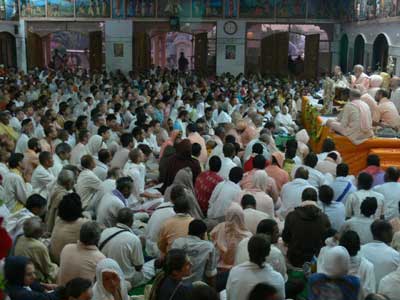
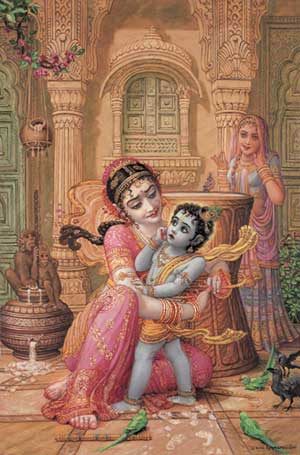 “If anyone hears Srimad-Bhagavatam with strong faith and great honor, Sri Krsna will be pleased with him and give him bhakti. That devotee will no longer experience lamentation, illusion, or fear from anything. He will cross over the cycle of birth and death forever. Therefore, Srila Vyasadeva has kindly manifested the Srimad-Bhagavatam.
“If anyone hears Srimad-Bhagavatam with strong faith and great honor, Sri Krsna will be pleased with him and give him bhakti. That devotee will no longer experience lamentation, illusion, or fear from anything. He will cross over the cycle of birth and death forever. Therefore, Srila Vyasadeva has kindly manifested the Srimad-Bhagavatam.